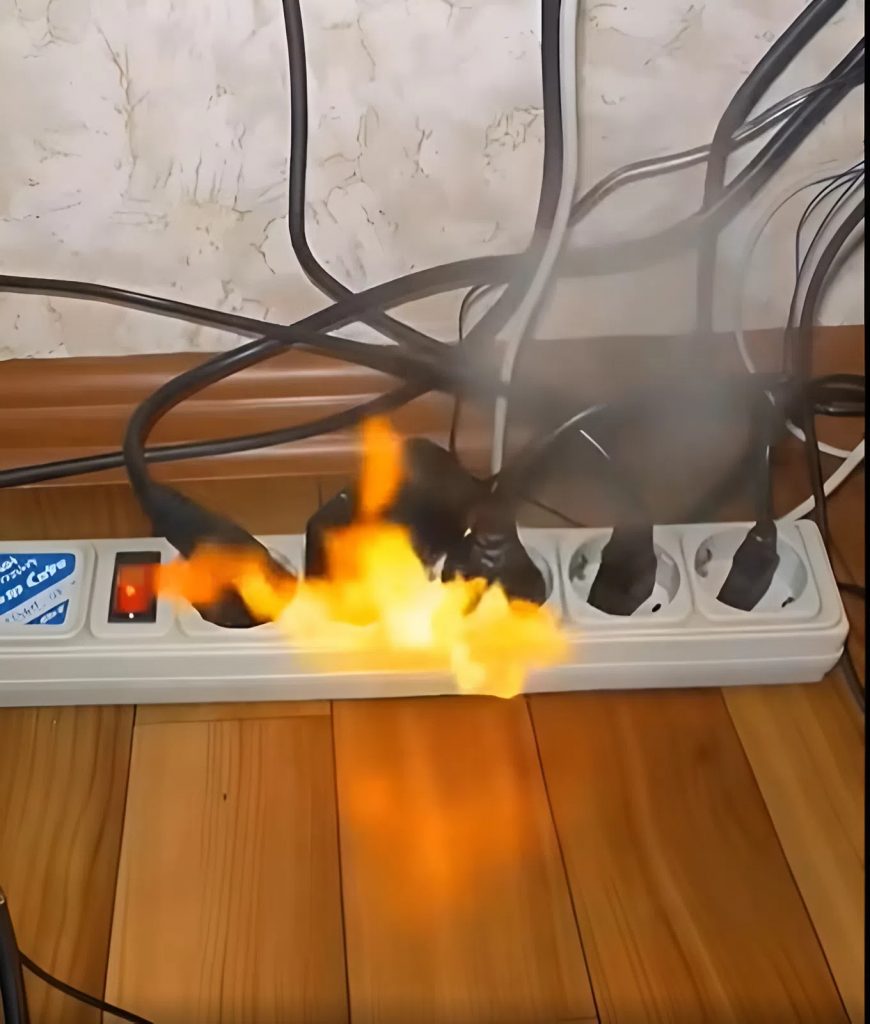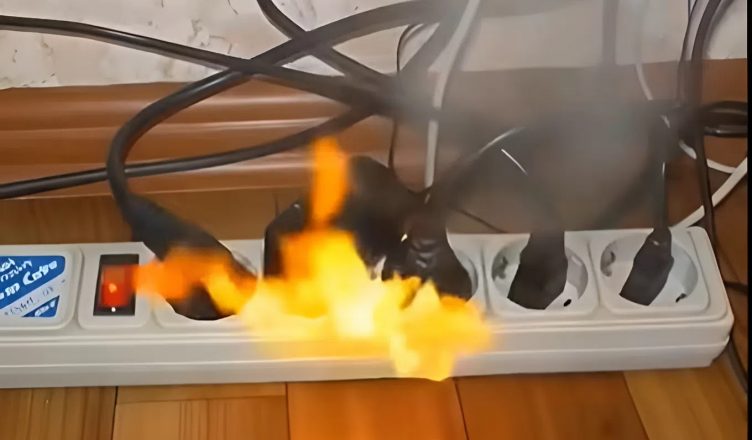In modern homes, the power strip has become a reflex. It lets us connect multiple devices at once, save space, and avoid cables snaking across the floor. But behind this convenience hides an invisible, very real danger. Too many people are unaware that certain devices should never, under any circumstances, be plugged into a power strip. Doing so can cause overheating, electrical failure, and in the worst cases, a fire. What you’re about to read could literally protect your home – and your life.
Many assume, “If it fits in the socket, it must be safe.” A dangerous misconception. Power strips are not built to handle unlimited electrical loads. Every device draws a certain amount of power, and when you combine them, the total can quickly exceed the strip’s capacity. Once you cross that limit, overheating becomes inevitable.
Here are the 5 devices you should never plug into a power strip if you want to avoid a disaster you’ll never forget.

- Space Heaters
These are among the most power-hungry devices in any household. A single space heater can draw up to 2000 watts – almost the maximum a typical power strip can handle. Plugging it in alongside other devices is a recipe for disaster: the strip can overheat within minutes, the insulation may soften, and a fire could ignite before you even notice. - Refrigerators and Freezers
It might seem practical, especially in kitchens with limited outlets, but it’s a very bad idea. These appliances work in cycles – their power draw spikes suddenly when the compressor turns on. Power strips handle steady loads poorly, and these fluctuations can cause them to fail… or kill your fridge completely. - Microwaves
Microwaves consume huge amounts of power in short bursts. Plugging one into a strip already in use is almost guaranteed to cause a surge. The heat it produces also contributes to damaging the strip’s plastic housing and wiring insulation. - Washing Machines and Dryers
These combine two dangerous factors: extremely high power consumption and strong vibrations. The vibrations can damage the strip’s wiring, while the high load risks tripping breakers – or worse. Large appliances like these must always be plugged directly into a wall outlet. - Electric Stovetops and Hot Plates
Connecting these to a power strip is a serious mistake. They can easily exceed 3000 watts. In addition to the electrical risk, the cooking heat adds to the heat from the overloaded cables, creating a perfect storm for a dangerous failure.
Why Is This So Dangerous?
Most household power strips are rated for around 3500 watts in total. Few people actually calculate their load, but combining even two large appliances can push you well over the limit. As cables heat up, insulation weakens, and all it takes is a single spark to start a fire. Statistics show that a disturbing number of home fires every year are caused by misuse of power strips.
How to Avoid Disaster
Use power strips only for low-power devices (lamps, phone chargers, laptops, etc.).
Never plug more than one large appliance into a strip.
Invest in strips with surge protection and on/off switches.
Regularly check cable temperature – if it’s hot, unplug immediately.
Always read the maximum load rating on your power strip before use.
This isn’t just a safety tip – it’s a reality too often ignored: a misused power strip can turn your home into a deadly trap in seconds. The property damage alone can cost thousands, but the real risk is to the safety of your loved ones.
Next time you go to plug something in, ask yourself: Am I risking my home for the sake of convenience? That single moment of thought could save everything you care about.
